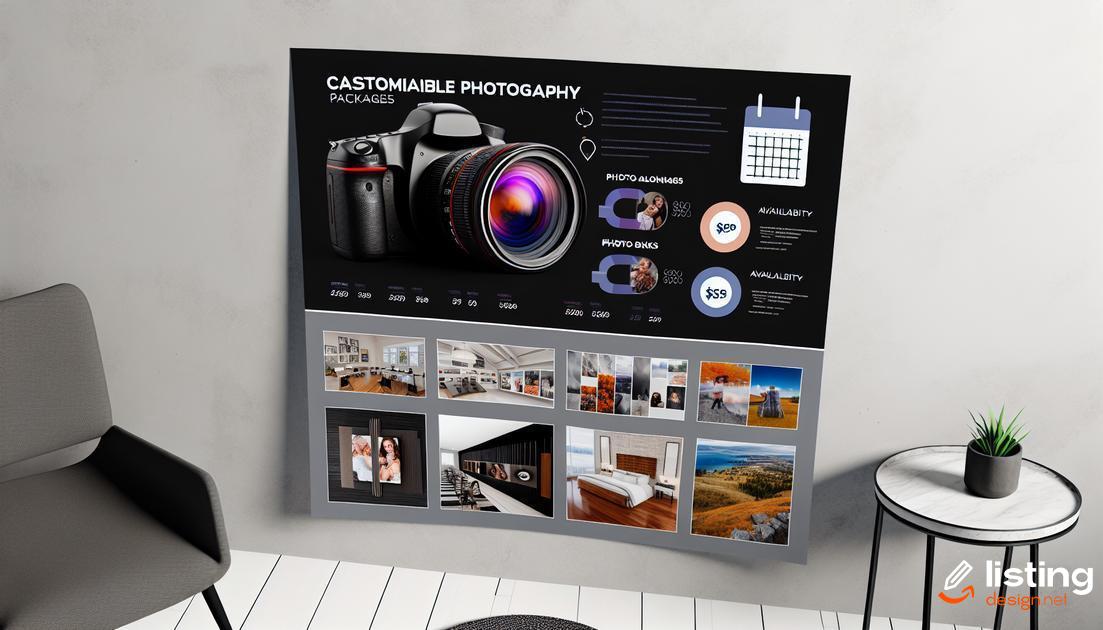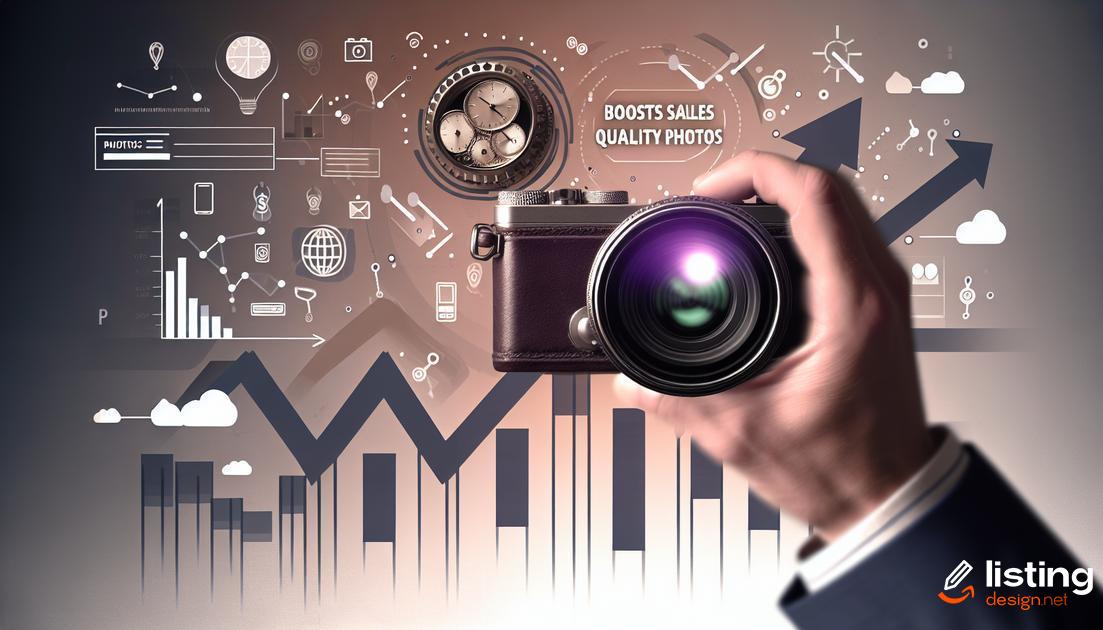Product photography packages are essential for any business looking to showcase their products in the best light. In today’s competitive market, having high-quality images can make all the difference. These packages vary significantly, and it’s crucial to understand what each offers. You’ll find information on different types of photography, how to choose the right package, and tips for working with photographers. Let’s dive into why good photography matters and how it can boost your sales.
Table of Contents
Understanding Product Photography Packages
When it comes to selecting a product photography package, it’s essential to understand the different components it might include. Packages can vary significantly, so knowing what to look for can help you make the best choice for your needs.
A basic package often features a set number of images, usually captured in a standard white background setting. These packages are suitable for those who need straightforward product shots without additional frills.
On the other hand, a premium package may offer more complex setups like lifestyle images, which showcase the product in use, or editorial images for a more artistic presentation. These packages may also include editing services like background removal, color correction, and retouching.
Another option could be a customizable package, which allows you to tailor the components according to your specific needs. This might include various backdrop options, different angles, or special effects.
Understanding what each package entails will ensure that you select a service that aligns with your brand’s vision and marketing goals. Cost is another critical factor; basic packages are generally less expensive, while premium or customizable packages may offer better value in terms of quality and versatility.
Overall, the right product photography package can make a significant difference in how your products are perceived, helping to attract more customers and boost sales.
Why Good Photography Matters

High-quality photography plays a crucial role in showcasing your products effectively. A well-captured photograph can highlight the intricate details, textures, and features of a product that words can’t quite describe. This visual appeal is vital for grabbing the attention of potential customers who are browsing through numerous options online.
Good photography establishes a professional image for your brand, fostering trust and credibility among shoppers. When customers perceive your images as professional and high-quality, they are more likely to associate those qualities with your products and services. This can significantly influence purchase decisions and ultimately drive sales.
Furthermore, clear and attractive product photos reduce the uncertainty buyers might have, minimizing the likelihood of returns and dissatisfaction. Consumers rely heavily on visual information before making online purchases, so having sharp, well-lit images that accurately represent your products is essential.
Investing in good photography is not just about aesthetics but also about conveying reliability and building a strong brand identity. It lays the groundwork for a positive customer experience and plays a pivotal role in the overall success of your ecommerce business.
Types of Product Photography
Studio Photography is one of the most common types. It involves shooting products in a controlled environment with professional lighting and backdrops. This type of photography is ideal for achieving high-quality, detailed images. Lifestyle Photography, on the other hand, shows products in real-life scenarios. This could be anything from a watch worn by a model to kitchen appliances in use. 360-Degree Photography allows viewers to see the product from all angles. This interactive type of photography is great for online stores.
Flat Lay Photography
involves products being shot from above. It is popular in the fashion and food industries.
Macro Photography
focuses on capturing minute details, suitable for jewelry and small accessories. White Background Photography makes the product the sole focus and eliminates any distractions, common in e-commerce. Group Photography shows multiple related products together. This type increases the perceived value by presenting a coordinated set.
Choosing the Right Package

Identifying Your Needs
Understanding what you need from a photography package is the first step. Determine the number of products you need photographed and the styles you require, such as lifestyle shots, product-only, or a combination. Consider the platforms where these photos will be used—e-commerce websites, social media, print ads—as this will influence the style and quality required.
Researching Providers
Look into different photography service providers and what they offer. Assess their portfolios to ensure they match your brand’s aesthetic. Reviews and testimonials can provide insight into their reliability and the quality of their work.
Comparing Packages
Analyze the contents of each package carefully. A basic package might include a limited number of images and simple edits, while more comprehensive packages may offer a higher quantity of photos, advanced retouching, and additional services like staging or prop sourcing.
Assessing Value
Don’t just look at the price. Consider what each package includes and how it aligns with your needs. Sometimes, paying a bit more upfront can save you money on additional editing or reshoots later on.
Customizability
Check if the packages are customizable. You may require specific features that are not included in standard packages.
Consultation
Schedule a consultation to discuss your requirements with the photographer. This also allows you to gauge their understanding of your vision and their ability to execute it.
Benefits of Professional Photography
Professional photography brings numerous benefits to your business, especially when showcasing products. It significantly improves brand image by producing high-quality and visually appealing photos that attract potential customers. These professional images help build trust with your audience and convey the value of your products.
Moreover, professional photographers have the skills and experience to use lighting, composition, and angles effectively. This results in photos that highlight your product’s best features, making them more attractive to consumers. Using professional photography elevates your product presentation, distinguishing your brand from competitors.
Investing in professional photography for your products also ensures consistency across your marketing channels. Refined, cohesive images maintain a professional look throughout your website, social media, and advertising materials. This uniformity is essential for developing a recognizable and reliable brand identity.
Furthermore, professional photography can significantly benefit your SEO efforts. High-quality, optimized images improve your website’s load speed, user experience, and search engine rankings. Well-crafted photos keep visitors engaged longer and encourage them to explore your offerings, potentially boosting sales and conversions.
Comparing Package Prices

Comparing package prices can be challenging, especially if you want the best value for your investment. Here’s a thorough comparison to help you make an informed decision.
First, understand that pricing varies based on factors like experience, equipment, and editing services. Packages might include different services such as the number of photos, background setups, and post-processing. For instance, a package offering 10 edited photos could be priced higher than one with 20 unedited shots.
Additionally, the complexity of the shoot plays a significant role in pricing. Simple product photos on a white background might cost less compared to lifestyle shots that require models, props, and a specific setting. Some photographers may offer hourly rates, while others charge per product or per image.
When comparing prices, evaluate what’s included in each package. Check if services like high-resolution downloads, image rights for commercial use, and additional touch-ups are part of the deal. A higher upfront cost might save you money in the long run if the package is comprehensive.
Finally, don’t forget to read reviews and ask for portfolios before making a decision. This way, you ensure you’re getting quality work for the price you pay.
Important Features to Look For
When evaluating product photography packages, it’s essential to consider several critical features to ensure you get the best results. First, examine the experience and expertise of the photographer. A skilled photographer with a strong portfolio can make a significant difference in the quality of your product images.
Next, look at the types of equipment used in the package. High-quality cameras, lighting, and background setups are crucial for capturing professional-grade photos. Additionally, inspect the range of services offered, such as image editing, retouching, and different backdrop options. Comprehensive services can save you time and help create a cohesive look for your product line.
Another important feature is the number of images included in the package. Ensure it covers multiple angles and detailed shots of your products. It’s also helpful to check if they provide lifestyle shots to show the products in use, which can be very appealing to customers.
Lastly, consider the turnaround time and flexibility for revisions. Faster delivery can be crucial for meeting marketing deadlines, and the ability to make changes ensures you receive satisfactory results. Weighing these features will help you choose the best package for your needs.
Customizable Photography Packages

Every business has unique needs when it comes to product photography. With customizable photography packages, you can tailor services to fit your specific requirements. Whether you need a few high-quality shots or an entire catalog of images, flexible options ensure you get exactly what you need.
Many photographers offer a range of
customizable options
. This could include different backdrops, lighting setups, and even specific editing styles that align with your brand aesthetic. Additionally, you might have the option to choose the number of photos, varying levels of retouching, or even the inclusion of lifestyle shots that showcase your products in use.
The ability to customize packages ensures that you’re not paying for services that aren’t relevant to your project. Instead, you can allocate your budget to aspects that will truly enhance the visual appeal of your products. This personalized approach often results in higher satisfaction and better overall results.
Questions to Ask Your Photographer
Questions to Ask Your Photographer are crucial when choosing the right product photography package for your needs. Here are some essential questions to consider:
- What is included in the package? Ensure you understand all components offered, from the number of photos to any retouching services.
- What is your experience with product photography? Knowing your photographer’s background can provide insight into their expertise and style.
- Can I see a portfolio? Reviewing previous work helps you gauge whether their style aligns with your brand’s aesthetic.
- What is your turnaround time? Make sure their timeline fits with your project deadlines to avoid delays.
- Do you offer customizable packages? This allows for flexibility and ensures the package meets your specific requirements.
- What kind of equipment do you use? Knowledge of their gear can give you confidence in the quality of the final images.
- How many revisions are included? Clarify how many changes are allowed before additional fees apply.
- Do you offer any guarantees? Understanding their policies on satisfaction can provide peace of mind.
- Are there any additional costs? Ensure there are no hidden fees that could increase the overall expense.
- If possible, will you be available for future projects? A long-term relationship can be beneficial for brand consistency.
By asking these questions, you can better evaluate a photographer’s suitability for your product photography needs and ensure you get the best value from the chosen package.
Common Photography Mistakes to Avoid

Common Photography Mistakes to Avoid
Inconsistent lighting can make your products look unappealing and unprofessional. Always use soft, natural light or controlled studio lighting to maintain consistency. Avoid harsh shadows and overexposure.
Ignoring the Background: A busy or distracting background can take away attention from the product. Stick with neutral or simple backgrounds to keep the focus on the product.
Quality matters, so ensure that your images are sharp and clear. Blurry photos can make your product look low-quality and affect customer trust.
Overediting: While it’s important to edit your photos, overdoing it can result in unnatural images. Aim for balanced colors, proper brightness, and contrast.
Neglecting angles can be a big mistake. Different angles can showcase various features of your product. Experiment with multiple angles to find the most flattering perspectives.
Ignoring the Importance of Scale: Show product size accurately. Use props for context or reference point, so customers understand the actual size.
Poor planning can lead to reshoots and added costs. Plan your shots, have a checklist, and make sure all necessary equipment is ready before you start.
Finally, not using a tripod can result in shaky and inconsistent images. A tripod ensures stability, allowing for crisp and professional photos every time.
Showcasing Your Products Effectively
Effective product showcasing hinges on several factors. First, ensure that the products are photographed in a well-lit environment, avoiding harsh shadows. Using a white or neutral background can help the product stand out, making it the focal point of the image. For added impact, consider showing the product in use or in a setting that highlights its features and benefits. Close-up shots are essential for showcasing intricate details, textures, and any unique selling points the product may have.
Consistency is Key
Maintain a consistent style across all product images. This includes using the same background, lighting, and angle for similar products. Such uniformity makes your catalog appear professional and cohesive, helping users to compare products easily.
Adding multiple angles and 360-degree views can enhance the customer experience by providing a comprehensive understanding of the product. When dealing with reflective or transparent products, specialized techniques like polarized lighting or gradient backgrounds can minimize glare and reflections, ensuring the product’s true appearance is captured.
Post-processing should not be overlooked. Basic edits like color correction, background removal, and sharpening can significantly enhance the final image. However, avoid excessive editing that may mislead customers about the product’s actual appearance.
Incorporating lifestyle shots can also be beneficial. These images show the product in real-world scenarios, helping potential buyers visualize how they might use it in their own lives. Such images are particularly effective on social media and can boost engagement rates.
Boosting Sales with Quality Photos

High-quality photos can significantly impact your online sales. Consumers are visual creatures, and their purchasing decisions are heavily influenced by the images they see. Professional photography ensures that your products are represented in the best possible light, providing a compelling and accurate depiction that encourages consumer trust and engagement.
High-resolution images highlight the intricate details of your products, making them more appealing to potential buyers. This visual clarity helps in reducing return rates because customers know exactly what to expect when they receive their orders. Moreover, platforms like Google and social media algorithms favor high-quality images, leading to better visibility and reach.
Integrating professionally taken photos into your marketing strategy can also enhance your brand image. Consistent, high-quality visuals across your website and social media profiles establish a sense of professionalism and reliability. This investment in quality photography can ultimately lead to increased consumer trust and loyalty, translating to better sales performance.


